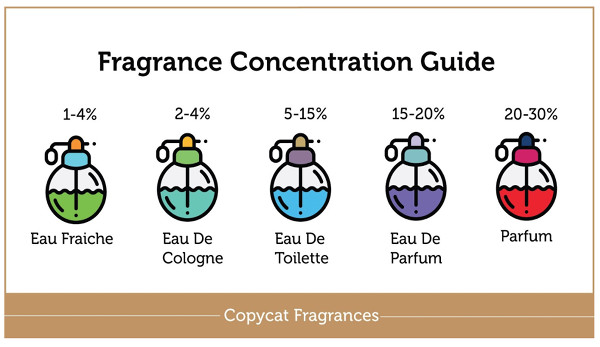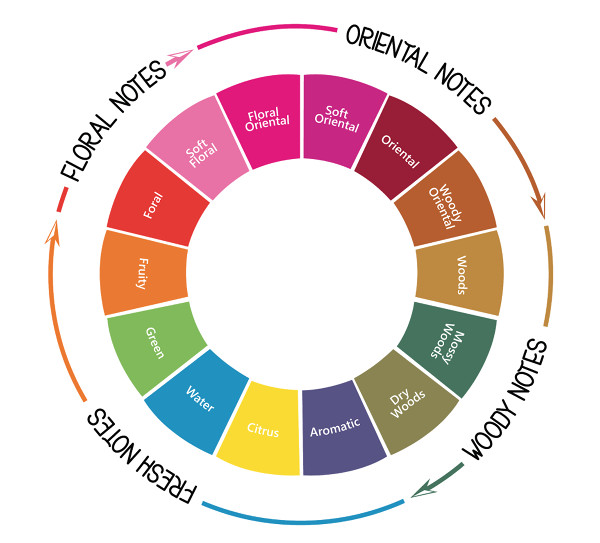Perfume is a universally sought after product across all cultures – whether its more mainstream perfumes we use every day or natural ones cultivated through combining natural plants. With the myriad of fragrance options available today, it is not always easy to pick the best perfume for you. So to make this process easier, we’ve outlined the essential steps to follow to help narrow down your search.
Learn The Different Perfume Types
Before you set to invest in a bottle of perfume, you want to know the different types of perfumes that are available on the market.
Parfum
Amongst the five common perfume types, Parfum is the strongest. This perfume type contains the highest fragrance oil concentration, at up to 25%, and the lowest alcohol content. Thanks to this composition, parfum lasts anywhere between 12 to 24 hours when applied on your skin.
However, due to the high fragrance oil concentration, parfum is the most expensive perfume type.
Eau De Parfum
Eau de parfum on the other end contains between 15 to 20% fragrance oils concentration. The most common parfum available in department stores is eau de parfum. EDTs last anywhere from 6 to 8 hours.
Eau De Toilette
The next time you go perfume shopping, don’t let the clerk lie to you by stating that EDPs are better than EDTs. Whilst there is no direct correlation between the two in terms of quality, their only difference is that EDTs have a lower fragrance oil concentration of between 8% and 15%. Typically, people who want to go for a lighter version of their EDP fragrance opt for EDTs instead. EDTs last anywhere from 4 to 6 hours.
Eau De Cologne
Similar to eau de toilette, eau de cologne is normally formulated as a lighter fragrance version. However, in recent years, many eau de colognes have been formulated for men and as aftershave colognes. Eau de cologne contains between 5% and 8% fragrance oils concentration.
Eau De Fraiche
Also known as fragrance water, eau de fraiche is the lightest perfume type. Eau de fraiche contains between 3% and 5% fragrance oils concentration and only last within the hour. These types of fragrances are perfect for refreshing, particularly at the beach, gym, or during shopping. Body mists are a perfect example of eau de fraiche.

Fragrance Notes
The next step is to learn the fragrance notes. Most conventional perfumes are created with three fragrance notes, i.e. base notes, middle notes, and top notes.
Base Notes
Base notes are the final fragrance notes of your perfume and are the ones that last the longest. These scent notes pair with heart notes to create the full body of the perfume. However, they are typically noticeable after the dry down period to help provide a lasting impression.
So when you are choosing a long lasting perfume, you want to focus your search on base notes that last longer. These include woody scents such as sandalwood or cedarwood. Other excellent examples include vanilla and musk.
Middle Notes
Middle notes emerge as the top notes begin to dissipate. This typically occurs anywhere between 15 and30 minutes after perfume application. Also known as heart notes, middle notes form the essence of the perfume. Middle notes last anywhere from two to four hours and excellent examples include lavender, tea tree, ylang ylang, and, and eucalyptus.
Top Notes
Top notes are the fragrance scents you immediately pick up once you apply your perfume. Typically, top notes last anywhere between 15 and 30 minutes. Fragrances such as lemon and mandarin citrus notes are a perfect example as they dissipate faster compared to fragrances such as sandalwood or vanilla.
What About The Scent Profiles
In addition to choosing the ideal fragrance notes, you also want to pick the ideal scent profiles, also known as the body of the perfume. Some of the common scent profiles include;
Oriental
Sometimes referred to as amber fragrances, combine a mix of warmth and sensuality. They are rich, subtle, and don’t dissipate easily. Typically, oriental scents also act as base and middle notes. Good examples includes vanilla, some woody scents such as pine and Cedarwood, some spicy scents such as cinnamon and cardamom, and some floral scents.
Citrus
Citrus profiles can be described as slightly sweet, refreshing, energizing, and sometimes sour. Good examples include lemons, lime, mandarin, bergamot, and grapefruit.
Herbaceous
Herbaceous scents include pungent, woody, and somewhat earthy and medicinal notes. These include basil and rosemary.
Other scents include floral such as rose and peonies and fruity such as green apple.

In addition to knowing the different kinds of scent profiles available, it also essential to learn how they interact with your body. For example, citrus scents tend to dissipate faster when applied. This means that an oriental bodied perfume will last longer than a citrus one.
Furthermore, some scent profiles do better in certain climates compared to others. For example, during colder seasons, you want a strong perfume that can last longer. Whilst during warmer weather, you want a light fragrance that will not be overpowering and irritating.
Typically, floral, fruity, and citrus scents perform better during spring and summer seasons. Stronger and deep scents such as amber, woody, and spicy scents perform better during fall and winter seasons.
Try The Best Perfume For You
Even with all the information above, you may not know that you are picking the best perfume if you don’t try it. Many of us make the erroneous decision of purchasing a perfume right after trying a whiff or two at the store. However, the best way to really try out perfume is to wear it throughout the day. As mentioned above, perfume is formulated with three fragrance notes.
It takes between 6 and 8 hours to experience the entire essence and body of the perfume. thus, before you spend your $$$ on the next perfume, spritz it on your pressure points or a testing strip and test it throughout the day to really find out if it’s what you need.
